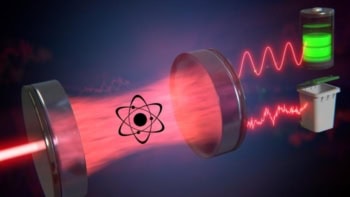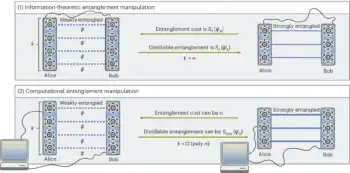In spite of years of intense investigation, low-temperature superconductors continue to hold surprises. These materials lose their resistance to electric currents and expel magnetic flux at temperatures close to absolute zero. It is widely believed that magnetic flux can only enter a superconductor in the form of vortices, each carrying a quantum of magnetic flux f = h/2e, where h is the Planck constant and e is the charge of an electron. However, this long-held assumption is wrong - as John Bardeen and Vitaly Ginzburg first pointed out in the 1960s. They showed theoretically that the amount of flux carried by vortices depends on their distance from the edge of the superconducting material, and that this flux can even be smaller than flux f close to the edge. But in the absence of any experimental evidence, the reduction in flux was considered an exotic or negligible effect. Now vortices that carry less than one quantum of magnetic flux have been observed in a thin superconducting film (A Geim et al 2000 Nature 407 55).
Andrey Geim of the Universities of Nijmegen and Manchester, and co-workers from Russia, Belgium and the UK, measured the amount of flux entering micron-sized aluminium discs, where edge effects are important. The measurements were made using a so-called ballistic Hall magnetometer. The samples were first cooled to 0.5 K in the absence of a magnetic field. As the field was increased, changes in the magnetic flux led to changes in the Hall voltage, which can easily be measured. The technique has a resolution of a tiny fraction of a flux quantum.
The team found that the magnetic flux increased in steps as individual vortices penetrated the disc. On closer examination, they noted that the height of some of the steps was as small as 0.001f. In other cases the jumps were negative, indicating that magnetic flux may be expelled.
Geim and co-workers repeated the experiments using discs with slightly different shapes and found that the amount of flux carried by the vortices depends crucially on the roughness of the edge of the disk. This effect arises due to changes in the structure of vortices near the edge. The team concludes that the effect will be important in the majority of experiments with thin films.



